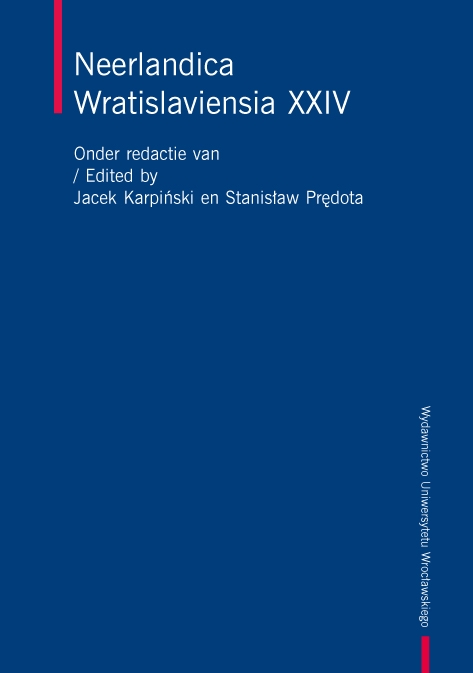

Articles

In Flanders at large, the astonishing pace of dialect loss over the past four decades has created a rather complicated linguistic situation. Dialect loss deprived people of the natural anti-pole of the standard language. By their sheer existence, dialects used to offer a sort of safeguard for the existence and the function of that standard language. Obviously, the repercussions of such a dramatic change can differ from region to region.
In the past, the linguistic distance between dialect and standard language was huge and both were looked upon as two really distinct varieties; this made the use of one instead of the other virtually impossible. Today, the linguistic and, most of all, attitudinal distance is considerably smaller, and, as a result, many people see no inconvenience in using the intermediate varieties in situations where actually the use of the standard would be or used to be more appropriate.
In this article we wanted to find out whether there is some truth in the general feeling that the linguistic situation in West Flanders is decisively different from the rest of the country in that the changes which had occurred elsewhere did not manifest themselves in the same way here, in particular as far as the so-called ‘tussentaal’ intermediate variety is concerned.
Dialect loss put an end to the diglossic situation which used to exist almost everywhere in Flanders. Diglossia requires the use of different language varieties in distinct communicative situations, e.g. dialect in an informal, and the standard language in a formal situation. There is ample evidence that where diglossia exists, the need for and the use of intermediate varieties is significantly lower than elsewhere.
Five consecutive surveys between 1979 and 2001 of the situation in West Flanders, the only province where the pace of dialect loss is still rather low, and where the diglossic situation has persisted until the present day, show that the use West Flemings make of dialects, standard language and tussentaal as well as their attitudes toward those varieties are different from the rest of the Dutch-speaking community in Belgium.
New, recent data corroborate those findings. In one of the very first enquiries to produce quantifiable data, Vandekerckhove 2004 and 2005 established that speakers from Brabant and Limburg do use tussentaal considerably more often than West Flemings do, the latter also being the only group where in specific situations the younger speakers use the tussentaal-features less often than the older ones. According to De Caluwe’s 2009 survey, based on the Corpus Gesproken Nederlands, the lowest amount of tussentaal-features is, here again, to be found with West Flemings 16.4%, all others totaling 60% and over.
Both Geeraert and Ghyselen examine attitudes. They confirm that in West-Flanders the acceptance of tussentaal is considerably lower than with the respondents from all other provinces.
All of this confirms Willemyns’s 2005 hypothesis that tussentaal is thriving precisely in those regions where dialect loss has occurred earlier and more intensely, whereas in those regions where a diglossic situation continues to exist, tussentaal remains on a lower level.
Summarizing we see how the most conclusive evidence in the overall tussentaal-debate comes from West-Flanders indeed. Not only are the attitudes of the West-Flemings toward the intermediate variety significantly more negative than elsewhere, they do indeed use standard language in situations in which others prefer Tussentaal. Also, there is ample evidence that younger speakers are more opposed to Tussentaal than older ones still. Even so, we see that in West-Flanders the situation is changing as well. Whereas until recently it used to be a homogeneous province, linguistically speaking, there are significant signs that the homogeneity is threatened and that the pace differs in various parts of the territory and depends on variables such as social class and education, age etc., as well as on geographic parameters and the urban-rural opposition. Whether those changes go in the direction of the “inland situation” remains to be seen, but it is a safe assumption. At any rate, it is almost certain that the “interior” is not going to follow the “good example” West-Flanders is setting as far as the use or rather rejection of tussentaal is concerned.